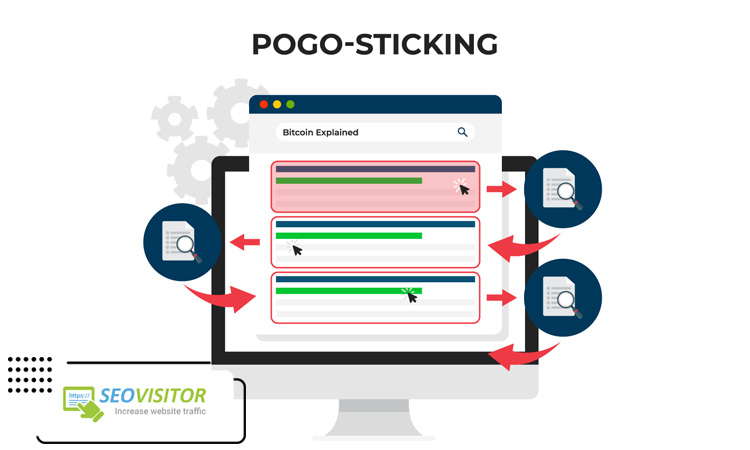
What is big data and how can it be used?
As can be guessed from their name, big data refer to massive, colossal information. This helpful article discusses the various aspects of big data in today’s world. In this digital world, we generate data in different fields every moment. If we decide to travel, we are directly and indirectly generating data. We search on various websites to buy travel tickets or hotel reservations. Performing these actions are all considered as data collected by different websites, and using this data, they can provide suggestions based on our interests in future trips.
Even when we exercise, we are generating information. With smartphones and smartwatches, body tracking has become possible because it is caused by recording and tracking the athlete’s physical activities. Next is content production on websites such as YouTube, a vast data production source. In such websites, content producers and users view the content and perform actions like liking, commenting, etc. For example, if a user likes video content on YouTube, recommender systems recommend similar videos to the user for viewing.

Data volume
Big data has unique characteristics, including velocity, volume, variety, and value. The first characteristic of it is volume, which refers to the amount of it. The amount of information is so staggering that storing them using traditional systems is impossible. Imagine how much data, including videos, comments, images, stories, etc., are uploaded per minute on the YouTube platform. It’s easy to use YouTube, but a lot happens behind the scenes. A great system in the background manages this massive amount of data 24/7.
Also, if we consider Google, it is tough to imagine the amount of data stored in this technology giant. The Google search engine processes countless searches every second, analyzing each inquiry based on its behavior. The following example is space telescopes through which NASA collects data from the depths of galaxies and planets. Of course, receiving, storing, and analyzing this data is not easy, so we need a system capable of handling a large amount of data.
Data dissemination speed or velocity
The second feature of big data is velocity, which means the speed of data generation. Social networks such as Instagram, Telegram, etc., generate much information every second and moment. This data includes video, photo, text, audio, etc. Another example is the data that weather systems produce through their sensors and send to central systems. Facebook, YouTube, Twitter, and Google are excellent examples of velocity. Nine hundred million photos are uploaded on Facebook every day. Twitter also posts 500 million tweets each day. On YouTube, there have been 400,000 hours of video uploaded. 3.5 billion searches are done on Google. These examples are clear examples of the velocity feature in these platforms.

Variety features
The third feature of big data is variety, which deals with combining data. This can be human or machine-generated. Data exists in structured, semi-structured, and unstructured forms. These diverse data include audio, text, photo, video, and other data we communicate with in real and virtual space daily. But the exciting thing is that big data should be able to classify different data types into different and correct categories while maintaining diversity. For example, Telegram deals with data such as audio, photo, video, text, emoji, etc., all of which refer to data variety.
The value of the most important feature
Value is the fourth feature of big data, which is considered essential. We should be able to extract value from this vast amount of data that we have. The strategy design must pull the desired pattern from the data and find the preferred way. The result is a reduction in resources and costs. In this context, big data proves to be helpful.

Big Data gateways
In a popular definition, big data refers to a large amount of data. But it is better to define it this way when dealing with a large amount of data or when the data analysis becomes very complicated beyond the capabilities of the usual methods. Sometimes even a small amount of data has such a complex analysis that we must go into big data topics. In some cases, the data types are of different styles, and their combination makes such data also called big data. Waze navigation software is a concrete example, which we will examine further.
Waze took Significant Data steps.
Waze is a software that uses big data in several stages. In the first step, Waze collects data from different sections. Users send data such as speed on highways, current location, etc., to Waze. Also, the data of traffic organizations that the software has access to or municipal organizations that do different constructions in cities have different types. Waze uses Big data methods to integrate these data.
The second step is related to data storage. The large volume of data from different types is placed next to each other during the integration step. They need a storage place. At this stage, it is best to perform the storage operation with Big data methods. The next step is the turn of Big data analysis, which is undoubtedly essential. Analyzing this amount of data using the latest statistical methods is necessary, and reporting the best course of action is vital. Even statistical calculations are so complex that they are considered part of Big data analysis alone. The last step, which is less sensitive, is displaying the data. Big data often pushes the display of data to the forefront. The Waze application presents this display style to the user.

Big data future
Any business dealing with data production, analysis, and use will soon face a large volume of data. In such a situation, the statistical data analysis methods become more complicated. As a result, practically every company that deals with data will soon move towards big data. Fields such as medicine, sports, marketing, forecasting financial markets, etc., will depend heavily on big data in the future.
Currently, some companies work on predicting stock prices, financial markets, and customer behavior by collecting data from social media users. Practically, the closest industries that use big data include marketing industries and financial markets such as the stock market. The marketing industry analyzes data due to a large amount of market data and the information consumers publish on social networks, which can reflect their future behavior. The past analysis focuses solely on economic factors and stock market data. But now, it is essential to use the mentality of all contacts constantly generating data in social networks. Such data can effectively predict stock prices, and we are entering the world of big data to predict stock prices.
Don’t miss out on the opportunity to grow your business online. Increase website traffic by optimizing your content, engaging with your audience on social media, and implementing targeted SEO strategies.




Lasted Comments (0)